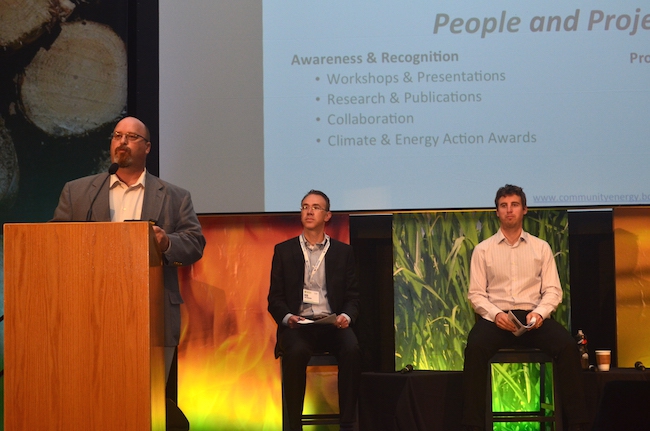
Features
Forestry Management
Harvesting
Biomass business case for managing wildfires
June 17, 2016 – Canadian wildfire prevention teams are constantly looking for new and innovative ways to manage wildfires with limited budgets. One speaker during the panel sessions at the International Bioenergy Conference and Exhibition in Prince George, B.C. put forth an interesting strategy that also has the potential to provide an economic stimulus for the region while servicing home heating needs for people in northern B.C.
David Dubois, chief of engineering and technical outreach specialist for the Community Energy Association, told the crowd that there is great potential for local managing of high-risk wildfire areas in northern B.C. communities while simultaneously harvesting biomass in a sustainable manner for use in residential heating.
“There’s a real opportunity and need to increase the amount of work being done,” he said.
Dubois offered a few examples of successful projects already completed in the region, including Telkwa’s biomass district heating system, which is fuelled by wood chips and materials from their own wildfire mitigation management system.
Telkwa is a small village with a population of about 1,350 people located just southeast of Smithers, B.C., about 350 kilometres northwest of Prince George.
From a life cycle cost point of view, biomass is competitive with many of the other energy options in communities with little or nor access to natural gas pipelines. One major benefit for adopting a local biomass system for residential heating is that the jobs generated for installing and maintaining these types of systems, and harvesting the biomass, would mean a large portion of the money spent on fuelling residents’ home heating needs would stay in the local economy.
“I think biomass can be a real benefit to rural and remote communities,” he said.
Another example of a town that could benefit from this type of system is Sicamous, B.C., which has a high risk of wildfire.
DuBois said that after the initial thinning for wildfire prevention is performed, the Sicamous area could manage the regrowth of those areas through harvesting for residential heating. He said that area has anywhere from 26,000 to 32,000 tons of biomass available form managing regrowth that could be used as base case for fuel for a district energy system to supply 80 to 90 per cent of the total heat load with other fuels used for meeting peak heat demand.
He added that putting these types of systems in place in remote communities aren’t without their challenges.
“The biggest challenge for small communities is capacity,” he told the crowd, adding that sorting out ownership of fibre is another issue that needs to be addressed for these types of systems to be successful.
More coverage of the 2016 International Bioenergy Conference and Exhibition:
Prince George expands DES
Bioenergy, an industry in transition
IBCE 2016 comes to Prince George
Bioenergy sector's opportunities and challenges
A global overview of the wood pellet market
June 17, 2016 By Andrew Snook

Print this page